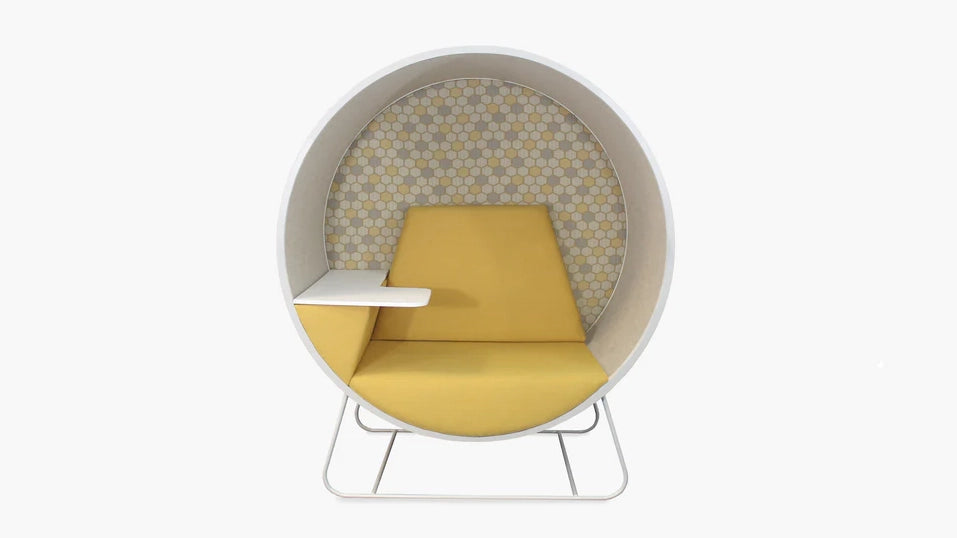Contract Furniture Fire Safety Regulations
Commercial furniture is subject to much heavier use than domestic furniture, it is also placed in different environments. Where the fire safety for domestic furniture is specified in the Furniture and Furnishings (Fire Safety) Regulations (FFFSR), the requirements for the contract sector are contained in The Regulatory Reform (Fire Safety) Order (RRFSO).
Whether you’re buying furniture for an office, school, hospitality or any other public building, it must comply with all of the relevant UK fire safety regulations. However, it is not always clear how these relate to furniture.
if you’re not sure what the fire safety regulations are, and what furniture is compliant, read Echelon’s complete guide below.
The Regulatory Reform (Fire Safety) Order (RRFSO)
Non-domestic furniture is less directly regulated than furniture supplied to domestic consumers. The RRFSO requires that there are fire risk assessments in place for all buildings used for non-domestic activities, covering:
- Construction & materials used
- Fire escape routes
- Fire detection
- Fire fighting systems
- The building contents (which includes furniture)
This approach means that the RRFSO does not actually specify precise ignition resistance requirements for furniture. Instead, decisions about fire resistance and general suitability of the furniture are made by a Responsible Person. As part of their responsibilities, the responsible person must ensure the suitability of any furniture and furnishings within the building by masking sure it meets British Standards for contract furniture.
British Standards for Contract Furniture.
A piece of upholstered contract furniture in UK must comply with BS 7176: 2007 which specifies the ignition resistance for non-domestic seating. There are three different types of test procedures involved.
- Smouldering cigarette test (BS EN 1021-1:2006)
- Match flame test (BS EN 1021-2: 2006)
- Smouldering and flaming ignition sources test (BS 5852: 2006)
The last of these is tested using small stacks of wood - a Crib 5 or a Crib 7 stack.
There are six different ignition sources (numbered 2-7) used as part of BS 5852: 2006 test. Ignition sources 2 – 3 are gas flames and other ignition sources. Sources 4-7 are wooden cribs (a crib is composed of wooden planks that are glued together). This why a piece of upholstered furniture may be labelled as Crib 5 or Crib 7. Source : britishfurnitureconfederation.org.uk
Source : britishfurnitureconfederation.org.uk
When determining the level of fire resistant’ a piece of furniture needs to be, BS7176 considers the type of premises in which the furniture will be located.

Source : britishfurnitureconfederation.org.uk
The table below provides a clear guide for the Responsible Person (and a good indicator for specifiers of furniture in general).

Source : britishfurnitureconfederation.org.uk
Note – the actual hazard level of your premises will depend on how the building is used. For example, if a museum is licensed, then it will be a medium hazard.
Recommendations for supply of furniture and furniture components
Suppliers of furniture to a a non-domestic environment are responsible for ensuring the furniture meets the level of ignition resistance set by the purchaser. They are, therefore, advised to seek reassurance concerning the validity of any test certificate provided by suppliers or third parties.
*Echelon will supply fabrics and foams that meet the fire-resistance requirements that are specified to us. If fire-resistance requirements are not specified it is important to note that we are not required by law to supply furniture that would pass particular fire-resistance tests."
References:
https://www.safelincs.co.uk/non-domestic-upholstered-furniture/
https://www.firesafe.org.uk/regulatory-reform-fire-safety-order-2005/
https://britishfurnitureconfederation.org.uk/wp-content/uploads/BFC-Contract-flammability-guide.pdf
https://chieftainfabrics.com/crib-test-explained/




